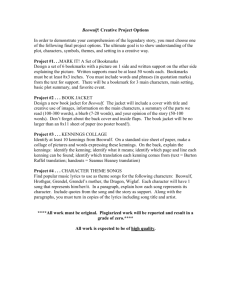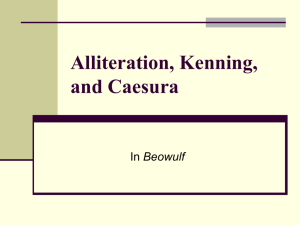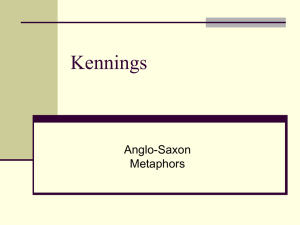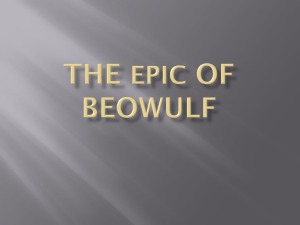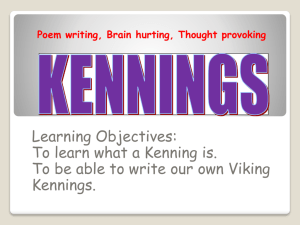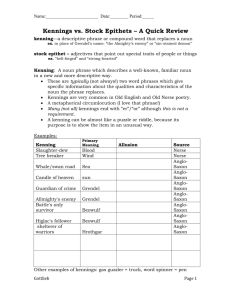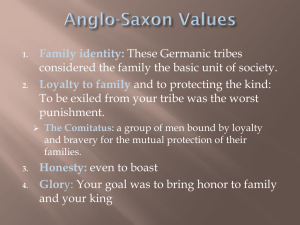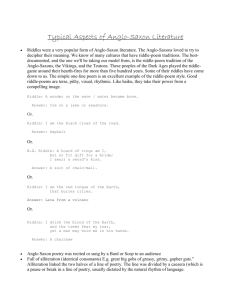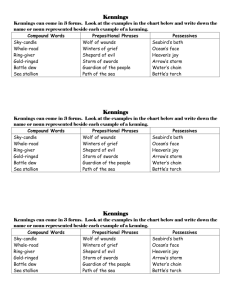All about kennings - Primary Resources
advertisement
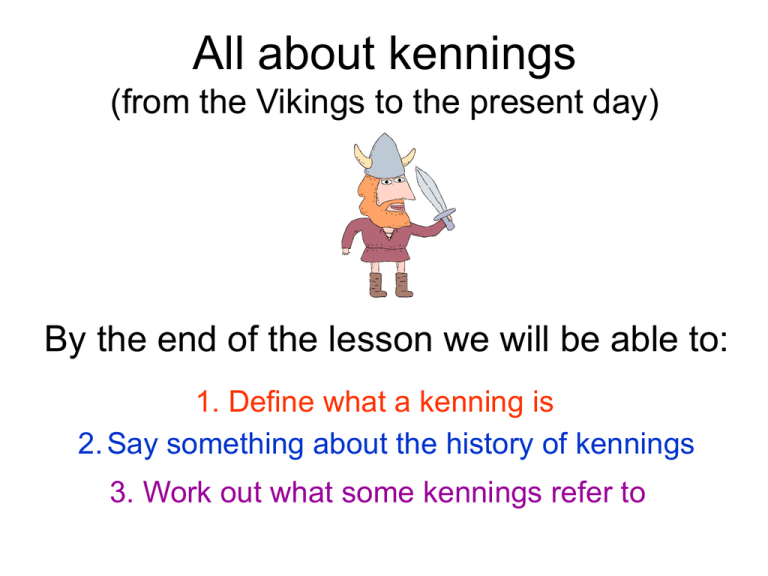
All about kennings (from the Vikings to the present day) By the end of the lesson we will be able to: 1. Define what a kenning is 2. Say something about the history of kennings 3. Work out what some kennings refer to On the BBC Radio 4 programme ‘Word of mouth’ the poet Laurence Sail described kennings as ‘a way of describing something indirectly’ They are a kind of ‘mini riddle’ - but one which is very much aimed at listeners rather than readers. At their simplest kennings can just be two words fused together with a hyphen to make a new noun. The two words can be noun/noun (swan-road = river) or noun/verb (skull-splitter = axe) and can be used to make a list describing an object, emotion, quality or animal, in any combination. An example of this kind of simple kenning is: Round-facer No-smiler Still-stander Two-hander Night-friendly Heart-beater Time-keeper Sudden-shrieker What am I? An alarm clock The word kenning is derived from the Old Norse phrase kenna eitt við, which means "to express a thing in terms of another", and is found throughout Norse, Anglo-Saxon and Celtic literature. (The national flag of Norway) When English books were rare all the "literature" in a particular part of the country might be all put together in one book. The great book we know as the "Exeter Book" was given to the library of Exeter Cathedral by the first bishop of Exeter, Leofric, who died in 1072. The Exeter book contains many riddles referring to things like a ‘thief-guest who was no wiser for having swallowed words’ (a bookworm) Now let’s look at some modern versions of kennings and see if we can work out what they’re about….. Ready? A famous kenning from 1970s advertising Lipsmackin' thirstquenchin' acetastin' motivatin' goodbuzzin' cooltalkin' highwalkin' fastlivin' evergivin' coolfizzin' What is it? Don’t let this picture fool you! Think hard about this one! I go through the wood in silence And come out onto the snow Where I leave my print although I have no footsteps Where I speak your heart although I cannot breathe What am I? I’m the lead in a pencil! Let me give you a clue about the next one! Grab the beast by the horns Wrestle it down the narrow streets ‘til you break its will to skitter its own way Subdue it, burden its ribcage Let your children ride and then let it stray Who cares? They’ll send a herdsman to round it up at the end of the day What is it? A supermarket trolley! So now can you: 1. Define what a kenning is? 2. Say something about the history of kennings (where could I find a book full of them?) 3. Try some of the simple ones yourself. Writing them about animals is a good place to start Over to you……
